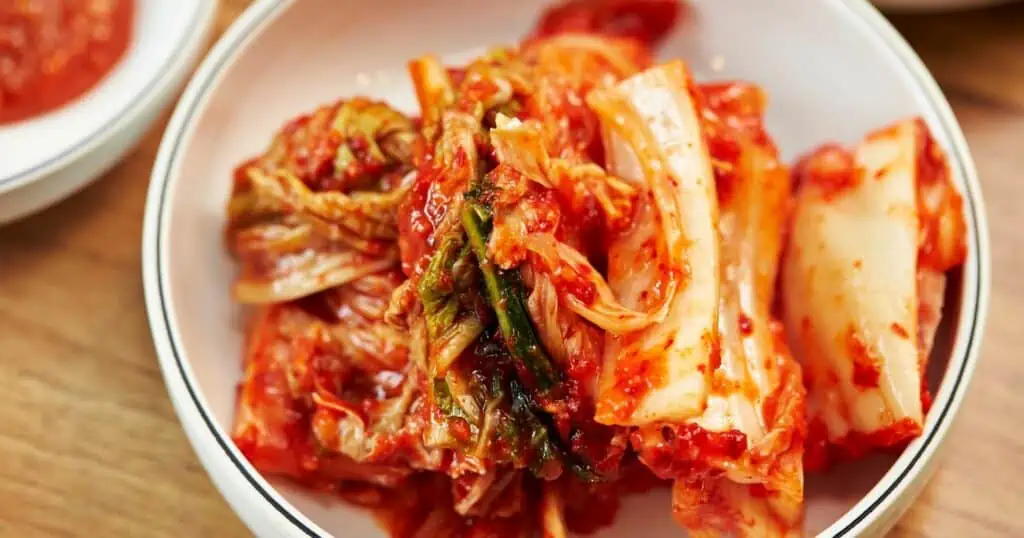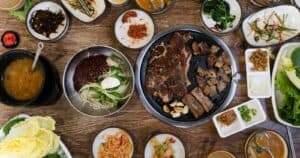You’ve probably noticed that delicious Korean dishes like bibimbap and bulgogi don’t come cheap. Korean food is gaining popularity worldwide, but the often high prices can make it feel out of reach for many.
So why exactly does authentic Korean cuisine command such a premium cost? There are several key reasons:
- Ingredients: Korean cooking calls for high-quality, fresh components like premium cuts of meat, seasonal seafood, and produce. These top-notch ingredients drive up costs.
- Preparation: Many Korean dishes require labor-intensive, time-consuming methods like marinating, fermenting, and grilling. This specialized prep work increases labor costs.
- Importing: Traditional Korean ingredients are often imported from Asia, adding transportation expenses that restaurants pass on to you.
- Popularity: With Korean culture expanding globally, demand for authentic Korean food is skyrocketing. More competition means higher prices.
- Location: Big city Korean restaurants have steeper overhead costs like rent and staff wages, leading to higher menu prices.
The price tag reflects the care, quality and artistry that goes into real Korean cuisine. But don’t let the cost deter you. In this article, we’ll break down ways to enjoy the flavors of Korea without breaking the bank!
The High Quality Ingredients Drive Up Costs
One of the biggest factors is that Korean cooking emphasizes fresh, high-quality ingredients. Dishes like bibimbap and bulgogi are loaded with produce like spinach, carrots, zucchini and bean sprouts. Meat and seafood used in Korean cooking tend to be top-notch cuts like ribeye and shrimp. These premium foods naturally cost more than lower quality alternatives.
Korean food also utilizes a lot of specialty ingredients rarely found in other cuisines. Things like gochujang (fermented chili paste), doenjang (fermented soybean paste) and premium rice wine can be difficult to source and therefore pricier for restaurants to buy.
Imported Ingredients Increase Expenses
Since many traditional Korean ingredients aren’t locally grown in Western countries, they have to be imported. That added transportation cost gets passed along to customers. Ingredients like ginger, seaweed, sesame oil and red pepper flakes come predominantly from Asia. Even produce like bok choy and daikon radish are mostly imported to meet demand.
Complex Preparation Methods Take More Time
Another factor is that Korean food involves labor-intensive preparation techniques. Making kalbi or bulgogi requires thin-slicing meats and marinating for hours. Soups and stews like yukgaejang need to simmer for a long time to develop rich, complex flavors. Dishes like bibimbap require careful assembly with a variety of ingredients. This extra time and effort in the kitchen is directly reflected in menu prices.
Kimchi Production is a Lengthy Process

Kimchi, the national dish of Korea, is always part of an authentic Korean meal. But the fermentation process required to make traditional kimchi takes days or even weeks. The ingredients must be salted and rinsed multiple times before being left to ferment at just the right temperature. This meticulous labor contributes to kimchi’s high cost.
Some Dishes Use Rare Ingredients
Certain Korean specialties require rare or seasonal ingredients that can spike costs. For example, dishes made with ginseng roots or abalone are steeped in tradition but require hard-to-find components. The king of Korean street foods, hoddeok (sweet pancakes) needs freshly harvested pine nuts as a key ingredient. These scarce ingredients mean higher dish prices.
Rising Popularity Equals Higher Demand
As interest in Korean food expands globally, demand for Korean ingredients and restaurant meals is also increasing. More competition for a limited supply of traditional Korean ingredients leads to higher costs. With Korean culture hitting the mainstream through entertainment like Squid Game and music by BTS, its cuisine is more desired than ever before.
Location Impacts Price Points
Where a Korean restaurant is located can significantly impact menu prices. Rent and labor costs tend to be higher in big urban centers, inevitably raising the prices customers pay. A meal at a Korean restaurant in New York City or Los Angeles may be up to twice as expensive as a restaurant in a smaller town.
How Does Korean Food Stack Up Cost-Wise?
Curious how Korean grub prices compare to dishes from elsewhere in Asia? Korean food is seen as a fairly affordable Asian cuisine.
A meal at a casual Korean eatery may run you $10 to $20 per person. At a high-end spot with fancy service and upscale decor, expect to pay $30 to $50 per diner.
This puts it on par cost-wise with Chinese fare. Korean food is usually cheaper than the average Japanese restaurant.
Of course, prices vary depending on where you are and what you order. Bibimbap tends to cost less than bulgogi made from premium beef.
The location makes a difference too. Eating Korean food in Seoul will be pricier than at a mom-and-pop Korean joint down the street.
But in general, Korean cuisine offers good value for money compared to many other Asian options. You can enjoy the spicy, savory flavors of Korea without breaking the bank!
Expensive Korean Food Menu
Some Korean restaurants offer expensive, high-end dishes. But you can also find affordable Korean food if you know where to look.
Beef Tripe and Intestine Hot Pot
This hot pot dish is the most expensive item on some Korean menus. It costs about $30.
Bōm’s 12-Course Menu
Bōm is one of New York’s newest Korean restaurants. Their 12-course menu costs almost $300. This makes it one of the priciest Korean meals around.
Korean Barbecue (Gogigui)
Korean barbecue is usually affordable. But at fancy restaurants, premium meat cuts and upscale style make it cost more.
Fish Stew (Saengseon Jjigae)
This spicy Korean fish stew may cost around $13 at some eateries. The bright red chili sauce packs a punch.
Skewers with Red Chili Sauce
Skewered meats with chili sauce are just $1.75 each. But the lively flavor is priceless.
Affordable Korean Food Menu
You can enjoy tasty Korean dishes without breaking the bank. Here are some wallet-friendly options:
Bibimbap
Bibimbap is rice with veggies and meat served in a hot stone bowl. It usually costs around $10.
Korean Fried Chicken
Crispy Korean fried chicken with spicy sauce costs about $15. It’s deliciously juicy.
Tteokbokki
Chewy rice cakes in a sweet and spicy sauce cost around $10. These cakes pack some heat!
Kimchi Stew
This sour and spicy kimchi soup with pork is only $12. It’s often served with rice.
Tips for Enjoying Korean Food on a Budget
Korean food may be pricier than alternatives, but there are ways to experience authentic flavors without overspending:
- Take advantage of lunch specials, which offer smaller portions of staple dishes at a lower price point.
- Opt for casual, counter-service restaurants instead of upscale Korean places with full wait service.
- Seek out food stalls at Korean markets for affordable snacks and street food.
- Go out for Korean barbecue with a group and share meat platter costs.
- Cook Korean dishes like japchae noodle stir fry and kimchi stew at home. Recreate the flavors using grocery store ingredients.
- Explore Korean happy hour menus where dishes are discounted or come with a free drink.
- Use a restaurant coupon or discount code when available. Apps like Yelp offer exclusive deals.
- Visit a Korean restaurant for lunch instead of dinner, when prices tend to be a bit lower.
- Order vegetarian Korean dishes made with tofu and veggies instead of pricey meat.
Is the Higher Cost of Korean Food Worth It?
At the end of the day, the higher prices of Korean restaurants exist for good reason. Dining on Korean cuisine means enjoying dishes made with care using time-honored preparation methods. For those seeking an authentic taste of Korea, the extra cost is worthwhile.
Rather than letting price deter you, get creative about how you can fit Korean food into your eating out budget. Follow the tips above, and explore the cuisine you’ve admired from afar. Let us know if you discover any other tricks for enjoying Korean flavors on the cheap! After your first bite of dolsot bibimbap or kalguksu noodles, you may find the higher cost is fully justified by the exciting new flavors.





